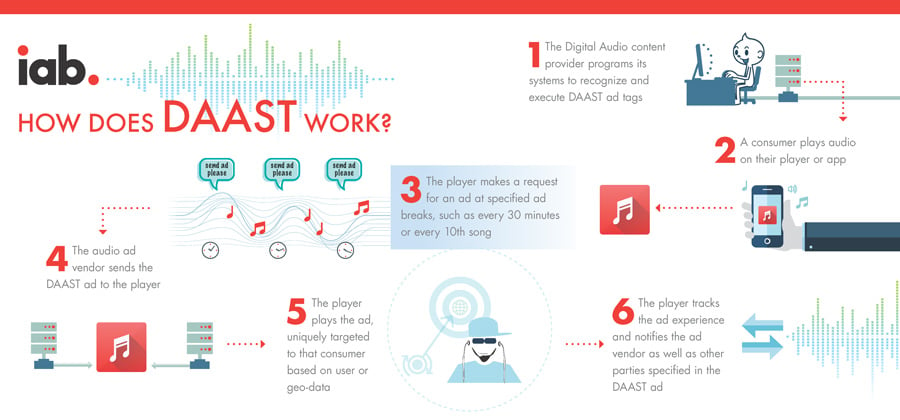What is Digital Audio Ad Serving? AdTech Definitions

Digital audio ad serving programatically and directly to a user will be a huge trend and area for growth in 2020. Digital audio ads total around 16 billion dollar’s a year as consumers tune in during the gym, their commutes, work, shopping and relaxing with their smart speakers. Audio in general is less expensive to product then standard display and video creatives and can has huge potential to scale.
Many deals in programmatic audio today are direct with each respective platform. Some concerns include content quality (not showing ads on explicit audio content that is user generated), no standard for “viewability” (you can’t measure viewability on an audio ad, it’s impossible!), and attribution (understanding the effectiveness of these ads)
As the digital audio advertising industry currently stands, there are only a few major players making their name in digital programmatic including Spotify, Pandora, Soundcloud, and iTunes. One of the bigger stories of 2017 was the acquisition of audio adtech company Adswhizz by Pandora.
Like all disciplines of advertising and ad serving, the industry needs standards and this is where the IAB comes in to play. The Digital Audio Ad Serving Template was created by the IAB providing a commonly accepted set of specs for audio ad delivery, executive and reporting across several devices and platforms.

According to the IAB the six steps for serving an Audio ad are
1.The Digital Audio content provider programs its systems to recognize and execute DAAST ad tags
2. A consumer plays audio on their player or app.
3.The player makes a request to an ad at specified at breaks such as every 30 minutes or every 10th song.
4. The audio ad vendor sends DAAST ad to the player
5. The player plays the ad, uniquely targeted to that consumer based on user or geo-data
Overall, digital audio is still in it’s younger years and 2019 will be an interesting time to see how the technology evolves.
See Also: